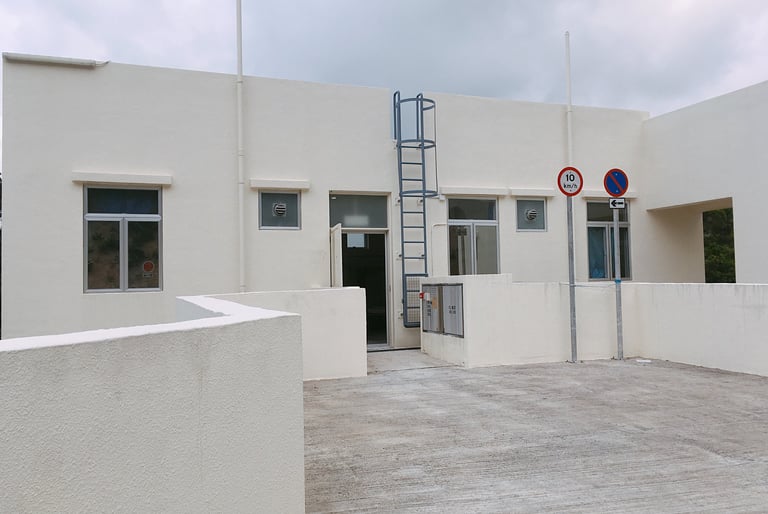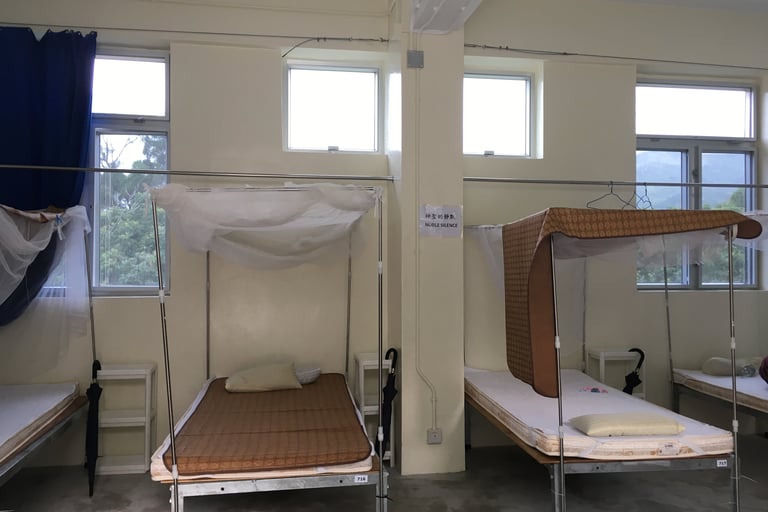A 10-Day Vipassana Experience: Rediscovering Myself in Silence (Part 1)
In the late summer of 2019, I left my restless city life behind and ventured deep into the green heart of Lantau Island to complete a ten-day Vipassana meditation course. It was an experiment in isolation and a gentle exploration inward.
For ten days, I lived by these rules:
• No phones, no reading, no writing
• Noble silence (Technically it was nine and a half days. Silence was lifted on the last morning)
• Wake up at 4 am and go to bed by 9pm, syncing with the nature's rhythm
• Vegetarian meals for 10 days. Lunch at 11 am and only fruit and drinks at 5 pm, no meals after that.
• Twelve hours of daily seated meditation, understand oneself through pain and peace
How it began
I first heard about the Vipassana course through a friend, who had a friend who recommended it after completing the course. Intrigued, I visited the official website to check the schedule, only to be taken aback: aside from meals and short breaks, the entire course consisted of sitting and meditating. I thought to myself, ‘Can modern people really endure this? I would probably be at a loss for what to do!’
However, I’ve always enjoyed trying new things and felt that this would be a unique experience. After all, I often struggle with boredom and can rarely sit still. I frequently find myself reaching for my phone or scrolling through social media. Even on days off, I tend to fill every moment with activities, as if taking a break is a waste of time.
Initially, I hoped to join a friend in this adventure, but when I registered online, I discovered that the course was already fully booked, placing me on a waiting list. Yet, fate intervened, and someone soon dropped out, allowing me to take their spot. So, I boldly decided to put my daily life on hold and requested an extended leave from work to retreat into the mountains (the centre is located in a remote area of Lantau Island).
Everything was set for my arrival on 31 July. That morning, I was filled with anticipation, only to hear from the observatory that a No. 8 typhoon warning would be issued at noon. The centre notified us that the course would proceed as planned. I felt a wave of anxiety—how would I get there with the typhoon? After discussing with friends, we coordinated with the centre and decided to depart as soon as the typhoon signal No.8 was lifted. It was the first time in my life I earnestly hoped for the cancellation of a typhoon warning.
Fortunately, in the next morning before 6 AM, the warning was downgraded to No. 3. Despite the cold rain, I dragged my large suitcase, soaked through and feeling like a sponge, afraid to sit down in case I wet the seat.
After transferring from ferry to bus, I finally reached the foot of the mountain. Then, I had to brave the rain dragging my luggage along a path that normally takes just fifteen minutes in sunny weather but felt much longer in the downpour. Before even starting my meditation journey, my body had already undergone a trial. Upon arriving at the centre, with barely a moment to dry off, I hurriedly joined the group entering the meditation hall, sat cross-legged, and began the first session.
The practice begins
In the Vipassana course, men and women are separated into two groups. We followed the audio guidance of Goenka, adhering to the Vipassana tradition taught by Sayagyi U Ba Khin. Two teachers (one male and one female) were present to assist and answer any student queries during designated times. Daily life was managed by volunteers, who prepared our meals and helped us with our needs.
Meditation is not a form of religious superstition. Rather, it is a journey of inner exploration. It involves deep self-observation, learning to notice the clutter of thoughts in our minds, and reconnecting with the subtle sensations beneath every inch of our skin. We are used to receiving a barrage of external information, values, and concepts, but Vipassana is precisely about returning to oneself, seeing things clearly without emotional entanglement or preconceived bias. Only by maintaining an objective heart can we be free from suffering. These words may sound clichéd, but many truths, read from books or heard from others, are entirely different when experienced personally and deeply felt. Vipassana belongs to the latter category.
The course focuses on two core themes: ‘impermanence’ (anicca) and ‘equanimity’. Yes, it may sound like a cliché, but during those ten days, I was reminded repeatedly. It gave me a rare chance to seriously ask myself: ‘Have I been practising this in my daily life?’
Equanimity is essentially a balanced heart free of judgement. Our suffering often stems from attachment to what we love; yet, the desire is insatiable. No amount of possession can fill the void. Similarly, our aversion to unpleasant things magnifies negative emotions, painting an otherwise neutral reality with subjective pain.
As the course progressed, we spent the first two or three days focusing on our breath, concentrating on the subtle rise and fall of the area between our nose and lips. Then, through body scanning, we extended our awareness to every corner of our bodies. The most challenging part of the twelve-hour daily meditation was those three ‘complete stillness' periods, which was a full hour of silence during which we were not suppose to speak, open our eyes, or move, not even change our posture.
At first, I could endure the first half hour, but the last half hour was a whirlwind of sensations. My right hip began to ache, my calves tightened, my cheeks occasionally itched from dust, and beads of sweat formed on my forehead. Many unexpected distractions arose: some could not bear the stillness and yawned, while others shifted in their seats or even let out the occasional noise.
The teacher gently reminded us: pain and comfort are merely sensations. Sensations themselves are neither good nor bad; it is the labels we attach to them that create suffering. The physical pain is real, and we cannot change it immediately, but if we overlay it with thoughts like ‘I’m suffering’, that is what truly traps us in pain.
A different kind of luxury
During summer in the mountains, the meditation centre had no air conditioning, just fans slowly rotating in harmony with the sound of cicadas outside. Mosquitoes and small spiders were frequent visitors. And for someone like me, who is used to the comforts of city life, it took some time to adjust. This experience made me realise just how pampered I had become.
As night fell and the noise of the world faded away, I looked up to see a sky filled with stars. Witnessing such vast and serene beauty reminded me of my childhood summers spent in the countryside, when life was simple and devoid of distractions. ‘Our perceptions shape our reality.’ Whether the world is noisy or quiet, whether life is beautiful or chaotic, ultimately depends on our hearts.






